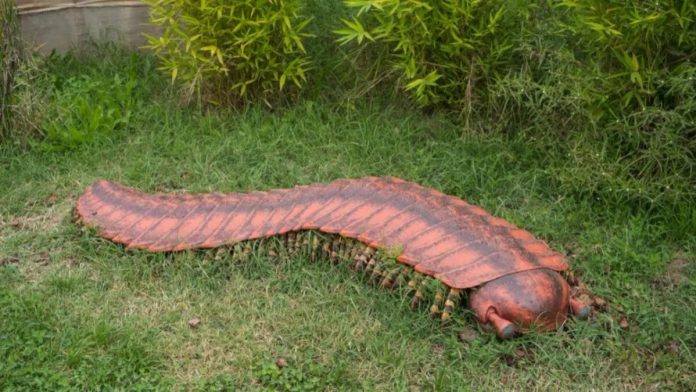Scientists have made significant strides in understanding Arthropleura, a massive, millipede-like creature that lived 340 million years ago. This ancient arthropod’s immense size and enigmatic nature had puzzled paleontologists for centuries. However, the discovery of juvenile fossils in a French coal field from the 1980s has provided critical insights. Researchers employed advanced CT scanning techniques to model the head of Arthropleura without damaging its fragile remains.
The scans revealed that the creature had a round head featuring two short, bell-shaped antennae and crab-like protruding eyes. Its small mouth likely served to scavenge leaves and bark. Importantly, the findings confirmed that Arthropleura shed its exoskeleton through an opening on its head, a trait shared with other arthropods. Despite its colossal size, it appears that Arthropleura primarily consumed vegetation from the surrounding forests.
Co-author Mickael Lheritier noted that the fossil revealed a body akin to a millipede but with a head resembling that of a centipede. Paleobiologist James Lamsdell, who was not involved in the research, expressed excitement at finally seeing the head of this elusive creature, emphasizing the challenges of working with delicate fossils.
Arthropleura, an ancestor of modern centipedes and millipedes, is part of the vast arthropod group, which includes insects, crustaceans, and arachnids. Since the late 1800s, scientists have diligently gathered and studied Arthropleura fossils, gradually unraveling its role and significance in Earth’s ancient ecosystems.















